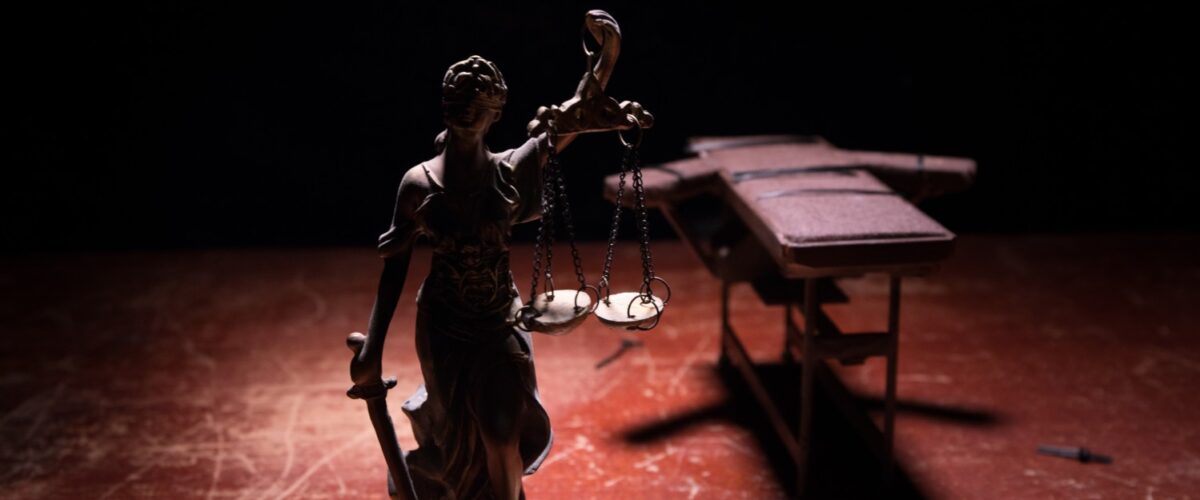
Namrata Sinha
Introduction
In March 2023, a three-judge bench of the Supreme Court of India, headed by Chief Justice D. Y. Chandrachud, considered constituting a committee to come up with a more appropriate mode of executing a person sentenced to death, “without pain”. This came up in relation to a pending petition from 2017 seeking to abolish the current method of execution by hanging. One of the alternate methods of execution suggested by the petitioner was that of lethal injections. However, the use of lethal injections to execute persons in the United States of America demonstrates that this is not a foolproof or painless method of execution – it is a highly technical procedure which involves a significant risk of causing unnecessary pain and suffering to the person undergoing the procedure at every step. No mode of execution is concerned with eliminating the pain for the individual on death row nor can it actually be achieved. Instead, it is about the appearance of a pain-free execution to the eyes of onlookers and the state. The search for a painless method of execution is a futile one. The inherent risk associated with all methods of execution threaten an individual’s inviolable right to dignity. It is yet another aspect of the administration of the death penalty in India that struggles to pass the constitutional muster.
Past consideration in India
Methods of execution have previously been considered by the Supreme Court and the Law Commission of India. In Deena v. Union of India (1983), the Court upheld hanging as a method of execution. It rejected the use of lethal injections on the ground that the Royal Commission on Capital Punishment was not satisfied that it would bring about death more quickly, decently and painlessly in all cases, and that it did not demonstrate any significant advantage over hanging. However, the Law Commission, in its 187th Report (2003), after rejecting other methods such as gas chamber, shooting by firing and electrocution, incorrectly held that the lethal injection was the most humane method of execution. It relied on the widespread use of lethal injections in the United States and recommended that it should be considered as an alternative to hanging. This was done without examining any evidence of botched executions, and based on responses to a consultation paper and questionnaire, the methodology of which remains unclear and highly suspect.
Realities of administering the lethal injection: Disguised as a painless procedure
Appearance of sterility
An examination of the procedure of administering lethal injections by the United States of America demonstrates that the Law Commission’s notion that it results in an apparently painless and quick death, is misconceived. While it may appear more palatable to onlookers than other methods of execution, there is evidence to suggest that this is a painful experience for the individual. This raises questions about its constitutionality. Even in the most ideal scenario, the drugs cause a loss of consciousness, followed by paralysis and suffocation, and finally, induce cardiac arrest in the individual. Due to its proneness to being botched, the process has manifested as painful, barbaric, gruesome and inhumane in a majority of cases.
The appearance of lethal injections as a sterile and humane method of execution should not be confused with the method actually being painless. Typically, the individual is injected with an anaesthetic or barbiturate (Eg: sodium thiopental, midazolam or pentobarbital), which is meant to cause loss of consciousness. However, the drug is often incapable of keeping the individual insensate in order to relieve them of the extreme pain and suffering caused by the other two drugs. This is followed by administering a muscle relaxant (Eg: pancuronium bromide). This slowly suffocates the individual, but its paralytic effect masks their emotions and renders them unable to communicate, making them appear as if at peace. A third chemical (Eg: potassium chloride) is then used to induce a cardiac arrest. This arouses an intense burning sensation, equivalent to liquid fire running through their veins. This slow process of death could take anywhere between ten minutes to several hours. Due to issues with efficacy and availability, some states have adopted a two-drug or one-drug protocol in which the individual is given an anaesthetic along with another opioid analgesic (Eg: fentanyl), or simply, a lethal dose of an anaesthetic. A study analysing autopsy reports of 216 individuals across 9 states executed between 1990 and 2019 revealed that a shocking 84% cases showed signs of pulmonary edema i.e., a condition where water fills up the lungs and induces a panic associated with drowning or asphyxiation irrespective of the protocol followed.
Risks of a technical and medicalised procedure
There are several technicalities involved in ensuring a proper execution of this procedure. An inadequate dosage of the anaesthetic or administration of injections out of sequence creates a risk that the individual might suffer unnecessary pain through the rest of the process. It requires personnel to factor in dosage based on indicators such as age, weight, health, history of drug use, drug tolerance and time of the last meal of the individual. The speed at and force with which the drug is administered also become relevant factors. Those who do not lose consciousness even as their organs begin to fail, feel excruciating pain, a sensation of being crushed and suffocated followed by intense burning, and yet, will be unable to demonstrate any outward signs of distress. Such individuals have only sparsely shown signs by spasming, convulsing, gasping for air, choking or heaving against restraints, which further affirms that they were suffering as they died.
Such a medicalised procedure requires physician participation especially since these technicalities implicate constitutional guarantees. However, due to its inherent contradictions with medical ethics exemplified by the Hippocratic Oath, the medical community is wary of becoming the “handmaiden of the state as executioners” (Denno, 2007). This leaves the job to prison officials, with no experience and expertise in the administration of drugs or in dealing with complications arising out of medical procedures, therefore, compounding the risk of a painful execution. In cases where there has been difficulty in locating a usable vein, officials have resorted to stabbing the individual several times. Alternatively, a ‘cut-down procedure’ is employed where the top layer of the skin is scraped off to administer the drug intramuscular injections, making the process slower and more painful. Where intravenous lines have collapsed, drugs have leaked into the soft tissue of the individual. Witnesses have heard or seen prisoners sporadically crying, moaning, wheezing, clenching their fists and writhing around in pain. These experiences fly in the face of the assumption of a quiet, painless, quick and humane execution by lethal injections.
Guarantee of a quick, painless and humane death?
Constitutional challenges in the United States
While we seek to explore the option of lethal injections as a painless method of execution, courts in the United States are fraught with constitutional challenges to it, and are struggling to come up with ways to justify it in light of ostensible questions on its violation of the Eighth Amendment (against cruel and unusual punishment). The issue was considered by the United States Supreme Court in the cases of Glossip v. Gross (2015) and Baze v. Rees (2008). Glossip affirmed Baze while setting an impossibly high threshold to establish cruel and inhuman punishment. First, the Court required the prisoner to establish that the protocol necessarily entailed a “substantial risk of severe pain”. Second, it put the burden on the prisoner to identify a “known and available alternative” method which entailed a “lesser risk of pain”. Such an interpretation leads to absurd consequences, allowing the State to execute using any means necessary, in violation of the spirit of the Eighth Amendment. The likelihood of procedural vagrancies underscores the unpredictability associated with this method of execution. In turn, it poses a significant risk to the individual’s right against cruel and inhuman treatment. In fact, uncertainties around this method have led the states of Alabama and Tennessee to halt executions indefinitely and many others to halt executions in specific cases.
Botched executions
In 2022 alone, at least 35% of the executions by lethal injections were botched. Botched executions present a direct challenge to the state’s desired presentation of a quick, decent and painless death. This was either a result of executioner incompetence, failure to follow protocols or defects in the protocols. Arguably, any infliction of pain in addition to the loss of life amounts to an additional punishment, which is excessive and cruel. While the state may seek to give legitimacy to its actions by distinguishing between the violence that it practises from that outside the law, it essentially allows room for a violation of an individual’s inherent right to dignity and of the value that dignity ascribes to every individual.
Substantial risk of pain
There is no method of execution that can guarantee a quick, painless and decent death. All methods carry with it its own risks. In case of hanging by the neck, for example, the inaccurate length or width of the rope would lead to a significant risk of decapitation. The degree of risk and magnitude of pain cannot be guaranteed by any procedure, thus making the process arbitrary. No form or number of procedural protections can obviate this risk. The nature of the risk begs us to err on the side of caution. Therefore, this quest for a painless mode of execution is pointless and only reflects the Court’s denial of their dignity-affirming role within the constitutional framework.
Conclusion: Time to rethink
The administration of the death penalty in India is rife with serious concerns. Recent studies have exposed process and outcome failures both, at the stages of conviction and sentencing. On closer examination of the demography of the prisoners on death row, it was found that about 76% of those sentenced to death belonged to backward classes and religious minorities and 74.1% to economically vulnerable backgrounds. An overwhelming majority (62.2%) of persons on death row were found to have at least one mental illness. This demonstrates that the death row population disproportionately comprises socio-economically marginalised groups. The lack of a coherent sentencing principle or framework further lends to the notion of manifest arbitrariness of this punishment. Research also illustrates the adverse psychological consequences of life on death row. These lay bare the injustices that engulf the criminal justice system. Catastrophic risks associated with any method of execution, and the impossibility of finding an infallible method that is painless is yet another aspect of the administration of the death penalty that struggles to meet the constitutional muster. The inherent constitutional deficiencies in the death penalty cannot be fixed by procedural or substantive regulations. Whether we find it in our conscience to legitimise state killing, despite the degree of risk involved in any mode of execution, will say a lot about where we are headed as a ‘civil society’.
Namrata Sinha is an Associate (Mental Health & Criminal Justice) at Project 39A, National Law University, Delhi. The author would like to thank Neetika Vishwanath for her patient guidance and advice through the writing process.





